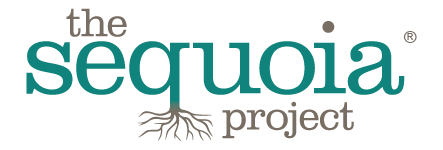As we celebrate six months since Trusted Exchange Framework and Common AgreementTM (TEFCATM) exchange went live, the Office of the National Coordinator for Health IT (ONC) and The Sequoia Project, as the TEFCA Recognized Coordinating Entity® (RCETM), announce another significant advancement for health information exchange on a national scale.
Today, Common Agreement Version 2.0 goes into effect.
Documents Being Released Today
When Common Agreement V2 was published in the Federal Register on May 1, 2024, some operating details from Common Agreement V1.1 were moved to Standard Operating Procedures (SOPs). These SOPs and other resources that support implementation of Common Agreement V2 were released today:
- QHIN Technical Framework (QTF) Version 2.0
- Facilitated FHIR Implementation SOP
- Individual Access Service (IAS) Provider Requirements SOP
- Governance Approach SOP
- Delegation of Authority SOP
- Expectations for Cooperation SOP
- Exchange Purposes SOP
- RCE Directory Service Requirements Policy SOP
- TEFCA Security Incident Reporting SOP
- Treatment Exchange Purpose (XP) Implementation SOP
Importance of Common Agreement V2
Common Agreement V2 adds a number of new elements to significantly advance nationwide network-to-network interoperability. The biggest change is the adoption of Fast Healthcare Interoperability Resources (FHIR®) -based exchange, which will allow participants to leverage TEFCA governance, policy, and technical services to scale FHIR Application Programming Interface (API)-based exchange nationwide. In addition, SOPs released today introduce policies and processes to further enhance the trust model that is the central feature of TEFCA. These SOPs include policies for:
- Transitioning TEFCA governance to the permanent TEFCA Governing Council comprising QHINs and Participants;
- Requiring cooperation by QHINs, Participants, and Subparticipants in investigating and responding to concerns raised by TEFCA leadership, QHINs, or Participants/Subparticipants about matters related to exchange under TEFCA;
- Reporting TEFCA security incidents to the RCE and potentially impacted QHINs, Participants, and Subparticipants;
- Specifying requirements on Individual Access Service providers for protection of privacy and security of individually identifiable information, consent from individuals about uses of their information by the IAS provider, and reporting to individuals about security incidents involving their information;
- Clarifying when Treatment exchange requests require response, when requests come from, among others, hospitals, ambulatory physician offices, LTPAC, pharmacies, laboratories, and individuals licensed to provide health care such as psychologists, nurses, social workers, and physical/occupational therapists;
- Catalyzing scalability of FHIR API-based exchange by supporting Facilitated FHIR transactions for providers, payers, public health, individual access, and other authorized uses, including publication of FHIR endpoints in the TEFCA Directory;
- Advancing individual access by enabling use of FHIR OAuth 2.0 capabilities that helps providers and payers meet HIPAA compliance requirements and more fully support individual access through TEFCA; and
- Allowing Participants, including care providers, payers, and public health authorities, to authorize contracted Delegates to conduct TEFCA transactions on their behalf.
Together, these policy and technical documents, which were developed and updated through collaboration between ONC, the RCE and the TEFCA community following established governance processes, advance TEFCA FHIR-based exchange and clarify expectations and requirements for TEFCA exchange under Common Agreement V2. We have also re-published an updated TEFCA Glossary, as well as the updated TEFCA Cross Reference Resource that identifies which Common Agreement and/or Participant/Subparticipant Terms of Participation section(s) each SOP references.
Treatment XP Implementation SOP
The inclusion of a Treatment XP Implementation SOP bolsters trust in TEFCA exchange by specifying the conditions under which QHINs, Participants, and Subparticipants are required to respond to a treatment query. Required responses, which enable automated access to patient records, are a key element of network efficiency and scalability, but only when founded on well-defined policies and oversight processes. The Treatment XP Implementation SOP, establishes conditions to operationalize trust in required responses, including:
- Query is initiated by a Covered Entity Health Care Provider including licensed individuals or a government health care entity, or a contracted Delegate of either;
- Health care services that are provided or intend to be provided to individual patients including activities such as medication management, care management, and identification of care gaps; and
- In-person or virtual health care services provided to a patient through synchronous or asynchronous interaction with a Licensed Individual Provider.
To support the continued expansion of TEFCA Treatment exchange to innovative models of care, a standing review process will be established as soon as possible to consider additional use cases on an ongoing basis.
Expanding TEFCA Exchange Purposes
The success of TEFCA depends on supporting the interoperability needs of the entire health care community, including consumers, health systems, clinicians, public health agencies, payers, health information networks, and more. A key aspect of broadening trusted exchanged is to fully support all of the TEFCA exchange purposes. In addition to the policies being released today, the QHINs have set a goal of releasing SOPs in other key areas such as Health Care Operations and Public Health by the end of this summer.
To that end, we’re thrilled to share that the Centers for Disease Control and Prevention (CDC) has achieved a major public health milestone – the launch of the first two public health use cases for TEFCA, electronic case reporting and public health query!
Thank you!
We appreciate the thousands of individuals who have joined our public calls and submitted feedback of this groundbreaking framework for nationwide interoperability.

